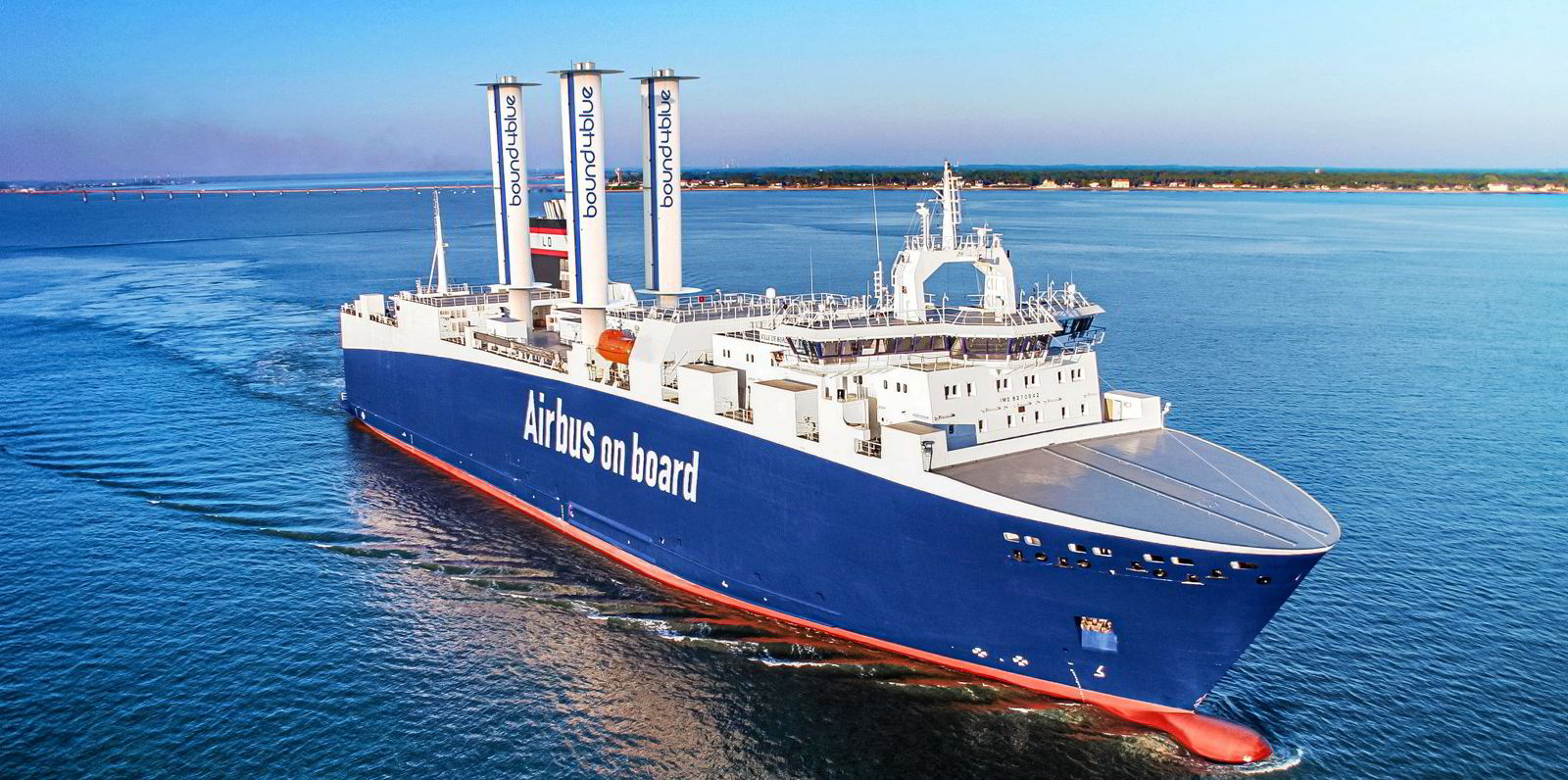Airbus, Cargill and Vale are doing it. Odfjell, Berge Bulk, K Line and Mitsui OSK Lines too. They are all exploring wind-assist propulsion.
Several technology companies can boast at least one of the 31 systems on the water at the start of 2024, with three more vessels about to have systems installed, according to Gavin Allwright at the International WindShip Association, whose members include system makers, developers and shipping companies with an interest in the technology.
Norsepower, Bound4Blue, Anemoi, BAR Technologies and AirSeas are just five of the companies that have set the scene so far, although let’s not forget the first modern vessel with systems on board was the E-ship 1. Launched in 2010, it operates as an offshore wind turbine delivery vessel, with four Flettner rotors on board.

Other companies are also joining the list of outfits with systems installed on board: Smart Green Shipping, Dealfeng, Oceanbird, MOL and Nayam Wings are potentially taking to the global stage in 2024 or later.
Allwright believes the number of vessels with systems installed could reach 90 by the end of 2024, a figure he says is deliberately conservative as technology companies are moving away from individual trial contracts to fleetwise deals, for newbuildings and retrofits.
Regulation makes the unusual, usual
Bound4Blue chief operating officer Cristina Aleixendri agrees with Allwright, that the estimate for 2024 is conservative. The Spanish company has been buoyed with recent contracts such as a four-unit deal for an Odfjell tanker and three systems on a ro-ro owned by Louis Dreyfus Armateurs on charter to Airbus, and she told TradeWinds the company is in talks for more than 20 units.
“We are growing as a team and in the coming year will likely grow from 25 to 45 people,” she said, adding that the company is also looking to move offices as it outgrows its current location and works to ensure its manufacturing suppliers can ramp up to meet increased demand.
“Fuel prices and regulations are on our side,” added Aleixendri.
The growing interest in finding new ways to curb fossil fuel consumption is set to increase as shipping enters the European Union Emissions Trading System and is then subject to the influence of the international Carbon Intensity Indicator. Then, there is growing commercial pressure, as customers push their sustainability demands onto their transport suppliers.
Maturity
It may be too soon to say 2024 is the year wind propulsion will become a mature solution, but there are signs it is on its way. Bound4Blue has teamed up with Japanese conglomerate Marubeni while another system maker, BAR Technologies, was at China’s Marintec event, hosted by China Merchants Industry Holdings.
But not everyone is in the wind camp. Some industry names still see these technologies as nothing more than “silly little sails”, and there was once a prominent head of maritime at a leading class society who was equally dismissive of the technologies, saying they would not materialise in his lifetime. He is still alive.
But the numbers are certainly climbing regardless of such doubts. Of course, one could also expect a few incidents as a new industry technology emerges. We certainly saw a few scrubbers going up in smoke as did a few diesel engines in their early days, and even nowadays. A recent incident TradeWinds has heard about included a retractable Flettner rotor on a ro-ro vessel having a problem.
And finally standards
While Allwright says 2023 was a bit like working against the tide of opinion, he believes that the tide is turning and things will change as public acceptance of wind propulsion grows. But there is one issue he says still needs to be finalised: how technology companies are talking about the energy or fuel savings their technologies offer.
The temptation is to talk in over-simplistic terms, he said, as a percentage of fuel saving or emission reduction. The efficiencies of these technologies are at the whims of nature: wind speed and relative direction, sea state, location, duration and even time of the year are all variables. Savings over one hour or one day will not be the same as the next.
In 2024, the nascent wind assist industry may begin to see this maturity as a set of standards emerge in how these technologies measure and report their savings. Marketing teams beware.



